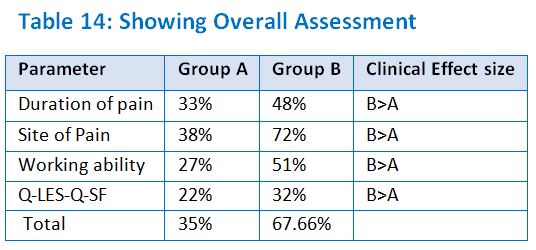A clinical study to evaluate the efficacy of Phala Taila Matra Basti in Kashtartava w.s.r. to Primary Dysmenorrhoea
DOI:
https://doi.org/10.21760/jaims.8.4.2Keywords:
Kashtartava, Primary Dysmenorrhoea, Matra Basti, Yoga Basti.Abstract
Background: Female health is a primary factor to be considered for the wellbeing and productivity of both family and society. Her menstrual health has a great impact on her educational, social and economic progress. Although dysmenorrhea is not life threatening, it is found to have a profound impact on daily activities resulting in absenteeism.[1] Primary dysmenorrhea prevalence estimates range from 25% to 90% among women and adolescents Studies from India reported the prevalence range between 50% to 87.8% During menstruation, many women experience gastrointestinal upsets which are increased by analgesics and anti-inflammatory drugs, which also cause headache, dizziness, drowsiness and blurred vision. The drugs in this Taila are Vatakaphahara, Shoolahara, Udararogahara, Srotovishodana, Garbhashaya Shodana, Balya. Due to these properties, it helps in reducing symptom of Kashtartava. Basti (therapeutic enema) is the ideal treatment option for disorders of Vata. Phala Taila[2] is a preparation mentioned in Kashyapa Samhita for management of aggravated Vata in Prusta (back of the body), Uru (hip), and Janga Pradesha (calf muscle). Aim: To analyse the effect of Phala Taila Matra Basti in the management of Kashtartava w.s.r to Primary Dysmenorrhoea. Method: “A Randomized controlled clinical study to evaluate the efficacy of Phala Taila Matrabasti in Kashtartava w.s.r to Primary Dysmenorrhoea.” Result: Taking all subjective and objective parameter into consideration especially with effect size comparison clearly shows that Group B is much better with respect to most of the parameter in providing clinical relief. Conclusion: Dashamoola Ksheera Yoga Basti is more effective than Phala Taila Matra Basti in the management of Kashartava w.s.r. to Primary Dysmenorrhoea.
Downloads
References
Shabnam Omidvar, Fatemen Bakouel, Fatemeh Nasiri Amiri & Khyrunnisa Begum. Primary Dysmenorrhoea and Menstrual Symptoms in Indian Female Student: Prevalance, Impact and management. Global journal of health science. 2016 Aug;8(8):135-144 published online 2015 Dec 17 Doi 10.5539/gjhs. v8n8
Vriddha Jeevakiya, Kasyapa Samhitha, vidyotini hindi commentary and translation by Sri Satyapala Bhisahagacharya; khila sthana Ch.8, ver89-96, Reprinted edition 2002, Varanasi: Chaukambha Santhan; 2002, p.43
Dutta. D.C, Textbook of Gynecology. 8th edition. New Delhi:Jaypee Brothers Medical Publishers;2020. p.147-150
KavithaP, Neelambikai N: Prevalence of dysmenorrhoea among women in the reproductive age group in Peelamedu area in Coimbatore. National journal of Physiology [internet] 2016; p 1-13.
Upasana Sharma, Sushila Sharma. A clinical study on effect of Vijayadi vati on Kashtartava w.s.r to Primary Dysmenorrhoea. IAMJ [internet].2019august; vol 7(8): page 1220-26. Available- http://www.iamj.in/posts/images/upload/1219 1226pdt
Faezeh Ghaderi, Shahin Banakar, Shima Rostami. Effect of pre- cooling injection site of pain perception in pediatrics dentistry: A Randomized clinical trial. DSJ. Nov 2013/vol10/issue 6: page 79094. Available –source of support –nil, conflict of interest: none declared.
Nebahat Ozendogan, Deniz Sayiner, Unal Ayranci, Alaettin, Sevgi Giray. Prevalence and predictor of Dysmenorrhoea among student at a university in Turkey. International journal of Gynecology and Obstetrics [internet].2009; 39-43 Available – www.Elsevier.com/locate/ijgo
Anibal A Teheran Luis Gabrial Pineros. WaLIDD score, a new tool to diagnosis of dysmenorrhoea and predict medical leave in university students.International journal of women’s health[internet]. 2018:10 p 35-45 Available –https;www.dovepress.com by 186.147.155.44
Malhotra Narendra, Jeffcoate’s Principles of Gynaecology. 9th edi. New Delhi: Jaypee Brothers Medical Publishers; 2019 p.725















